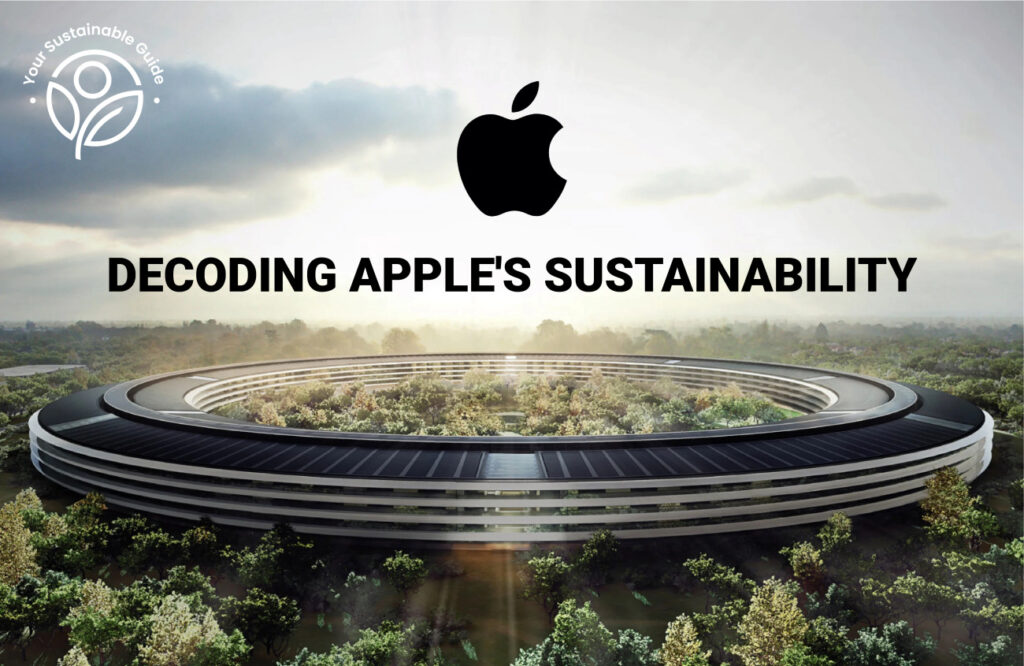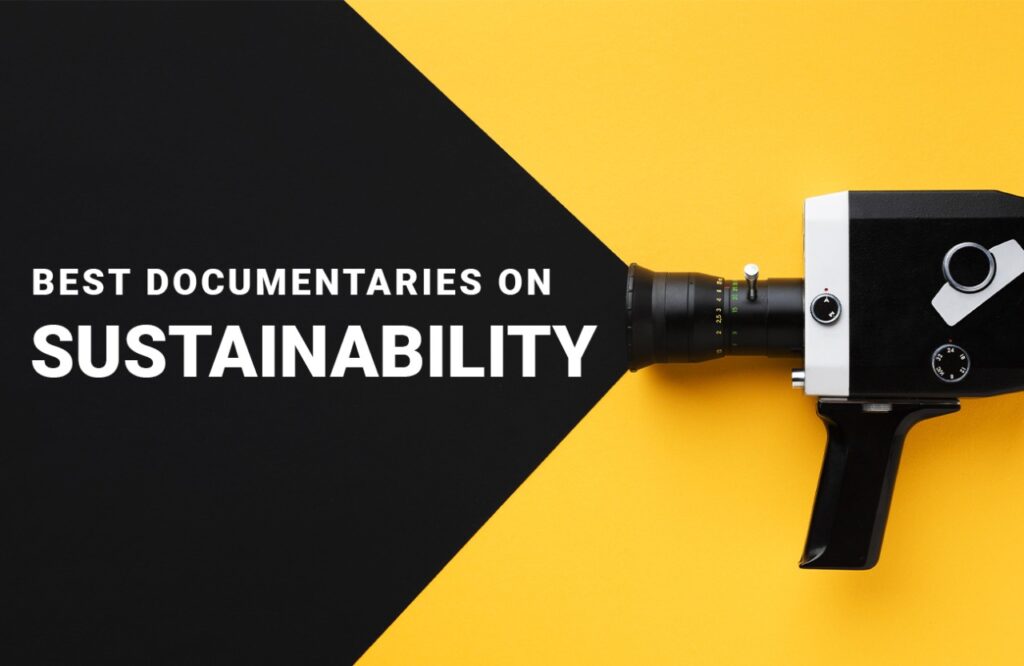Apple has transformed consumer technology to the extent that everyone, everywhere, dreams of owning its products. As the world’s leading tech giant, it is now focused on combating the rising climate crisis. So where do we start with Apple sustainability? Well, for starters, Apple recycles and refurbishes. It is passionate about minimizing its carbon footprint by conserving resources and addressing social and ethical concerns throughout its operations.
The Cupertino-based multinational has always portrayed itself as planet-friendly by talking big about its environmental initiatives and climate pledges. But how much of that is actually true? With a new iPhone variant being launched every single year, isn’t the company promoting overconsumption? Or is Apple really as green as it claims to be? Let’s explore the corporation’s sustainability programs to understand its take on protecting the planet.
Apple’s Environmental Policy and Goals

Apple’s environmental policy and mission reflect the company’s commitment to keeping a check on its impact on the planet and promoting sustainability. By setting these goals and actively working towards them, the organization aims to lead as an example by driving innovation and inspiring positive change within the technology industry and beyond. An overview of Apple’s key sustainability goals are:
- Carbon Neutrality: Apple is already carbon neutral across its corporate operations worldwide. Now, it is striving to achieve carbon neutrality in its entire product line by 2030. This involves decarbonizing its supply chain, minimizing greenhouse gas emissions and investing in renewable energy projects to offset any remaining emissions.
- Energy Efficiency and Renewable Energy: Apple aims to design energy-efficient products and reduce energy consumption in its facilities. It has made significant investments in several renewable energy projects, including solar and wind farms, to power its operations and achieve a 100% renewable energy goal.
- Responsible Sourcing and Material Innovation: Apple is dedicated to responsible sourcing of raw materials, ensuring their extraction and production meet rigorous environmental and social standards. The company aims to use recycled and renewable materials to eliminate waste generation and promote material recycling and recovery.
- Product Design: Apple focuses on Earth-friendly product designs that are durable, easily repairable, and recyclable to promote circular economy principles and reduce electronic waste. It implements recycling programs to facilitate the proper disposal and reprocessing of its products.
- Water Conservation: Saving water is another key sustainability goal for Apple. The company strives to reduce water consumption in its manufacturing processes and facilities. It does so by implementing water-efficient technologies and practices, such as advanced cooling systems and water recycling initiatives, to reduce its water footprint.
Renewable Energy and Carbon Footprint

As a billion-dollar organization operating on a humongous level, Apple needs to come out as accountable and take responsibility for its operations. Responsibility towards its consumers, its suppliers — and of course, towards our planet. To prove its stance on being environmentally conscious, it has undertaken various initiatives and made significant investments in renewable energy projects to lower its carbon emissions across its business model and supply chain.
- On-site Renewable Energy: Apple has installed solar arrays and other renewable energy systems on-site at its facilities in 43 countries worldwide. These systems generate 100% clean, renewable energy to power Apple’s operations, including data centers, offices, and retail stores.
- Renewable Energy Procurement: Apple has entered into long-term agreements with renewable energy providers, investing in large-scale renewable energy projects. These projects include wind and solar farms located in various regions globally, which supply green energy to Apple’s operations.
- Energy Storage: Apple has invested in energy storage systems to enhance the effectiveness and efficiency of its renewable energy projects. Energy storage helps to optimize the use of renewable energy by storing excess energy generated during peak production periods for use during periods of high demand.
- Supply Chain Emissions Reduction: Apple recognizes that a significant portion of its carbon emissions occurs within its supply chain. In fact, it is estimated that 2022’s iPhone manufacturing alone generated an insane 17 megatons of CO2 emissions. To counter such issues, the company works closely with its suppliers to transition to renewable energy sources. Apple provides resources, guidance, and support to help suppliers improve energy efficiency and adopt renewable energy solutions.
- Environmental Progress Reports: Apple dedicatedly releases annual Environmental Progress Reports, providing transparent updates on its sustainability initiatives, clean energy projects, carbon emissions reduction efforts, and so on. It’s Environmental Progress Report 2023 highlights the organization’s previous year’s performance and achievements and outlines future commitments, holding Apple accountable for its sustainability objectives.
Sustainable Product Design and Recycling
Apple believes that its products are “Good for You. Good for the Planet,” as all of its devices are “Designed with the Earth in mind.” The company has constructed products that are energy efficient and built to last. To top it all, it has pioneered innovations in the recycling and responsible sourcing of materials, taking full responsibility for all its products throughout their life cycles.
- Material Selection: There has been a rising concern about the degradation of the Earth’s crust because of mining metals. Therefore, Apple emphasises selecting materials that are environmentally friendly and recyclable. At present, about 20% of its product components are made from upcycled materials like recycled plastic, recycled cobalt, and so on. In 2022, the tech giant significantly expanded its recycled metals portfolio and now sources over 2/3 of all aluminum, 3/4 of all rare earth elements, and over 95% of all tungsten in its devices. In fact, it declared that all the iPhone versions starting from iPhone 13, will have the wiring done with 100% certified recycled gold.
- Design Strategy: As already mentioned, Apple designs its products to be durable and long-lasting. By using high-quality materials and robust construction techniques, it focuses on extending the lifespan of its devices. The hardware team carefully selects and integrates energy-efficient components such as low-power processors, efficient displays, and optimized power management systems. By reducing energy consumption during use, Apple devices can offer longer battery life and minimize their overall environmental impact.
- Modular Design and Repairability: Apple acknowledges the importance of repairability and has taken steps to make its products more accessible for repairs. Through modular design principles, components such as batteries and screens can be replaced individually, reducing e-waste. The company also provides detailed repair guides and resources to assist authorized service providers and customers in repairing their devices.
- Recycling Programs: Apple has implemented recycling programs to ensure the responsible disposal of its products. The company encourages customers to return their old devices through various initiatives, such as the Apple Trade-In program. These devices are then refurbished and resold if possible or recycled to recover valuable materials. Apple utilizes advanced recycling techniques. It has a robotic disassembly team of Daisy, Dave and Taz that can disassemble several iPhones per hour and recover valuable materials such as gold, aluminum, cobalt, and copper.
- Reducing Packaging Waste: Apple actively works to minimize packaging waste through design optimization and material choices. The giant has significantly reduced the size and weight of its product packaging, resulting in fewer resources used and less waste generated. It uses paper packaging and promotes the recycling of these materials, encouraging customers to dispose of them responsibly.
- Closed-Loop Supply Chain: Apple has been working to establish a closed-loop supply chain, aiming to use recycled materials in the production of new devices. Through partnerships and its own recycling initiatives, the tech label is working towards a future where gadgets are made using only renewable or recycled resources, cutting the need for mining.
Supplier Responsibility and Labor Practices
Apple’s Supplier Code of Conduct sets the standards for ethical business practices and responsible sourcing throughout its global supply chain. The code outlines the organization’s expectations from its suppliers in areas such as labor and human rights, health and safety, and ethical sourcing of materials. Some notable aspects of Apple’s take on worker well-being and collaboration with suppliers for sustainability improvements cover:
- Fair Labor Practices: Apple is committed to ensuring ethical practices within its supply chain. It prohibits any form of forced or child labor, as well as illegal work practices. The code mandates that suppliers provide fair wages, reasonable working hours, and a safe and healthy work environment for their employees. To confirm if everything is as per expectation, Apple audits its suppliers to verify compliance and address any issues identified.
- Worker Well-being: Apple is committed to supporting the physical and mental health of workers in its supply chain. The company provides resources to address health and safety concerns, including programs to promote worker education and empowerment. Additionally, its code mentions that suppliers have to implement systems for worker feedback and grievance mechanisms, ensuring that workers have a voice and can raise concerns without fear of retaliation.
- Traceable Sourcing: Apple practices responsible sourcing of materials, with a focus on ensuring that minerals and raw materials used in its products are obtained ethically and sustainably. The organization works to trace the origin of key minerals, such as tin, tungsten, tantalum, and gold, to prevent the use of conflict minerals. Also, it has made it mandatory for suppliers to adhere to strict environmental standards and minimize the use of hazardous substances.
- Supplier Responsibility Program: Apple’s Supplier Responsibility Program ensures that the vendors uphold the company’s standards and commitments. This program involves regular audits and assessments of partner facilities, with a focus on identifying and addressing any violations of the supplier code of conduct. Apple provides training and resources to suppliers to help them improve their practices and meet the required standards.
- Collaboration for Sustainability Improvements: Apple actively collaborates with its vendors to drive sustainability improvements throughout the supply chain. It works closely with suppliers to identify areas for improvement, develop action plans, and implement sustainable practices. This approach includes sharing best practices, providing guidance on energy efficiency and waste reduction, and encouraging the adoption of renewable energy sources.
The above aspects prove the fact that Apple is committed to employing an ethical supply chain where no harm comes to any workers. But, unfortunately, the reality isn’t that great! In 2019, Apple, along with some other multinationals, faced a US lawsuit over Congolese children’s deaths that occurred during cobalt mining. Prior to that, the organization had been called out multiple times for violation of labor rights.
It is to be noted that Apple manufactures its products in China— a country infamous for exploiting human and labor rights in broad daylight. So it’s no wonder that such cases surfaced. However, the positive thing is the tech company has improved operations since then and trying its best to own a clean supply chain.
Environmental Data and Reporting
Apple’s environmental data tracking and reporting mechanisms involve rigorous measurement and analysis of various aspects of its operations. The company collects data on energy consumption, greenhouse gas emissions, water usage, waste generation, and material efficiency across its supply chain and facilities. This data is then meticulously analyzed to identify areas for improvement and inform the development of sustainability initiatives.
One notable aspect of the corporation’s transparency is its annual Environmental Progress Report, which provides detailed information on the progress of its sustainability efforts. The report highlights key achievements, sets new goals, and outlines the challenges faced in the previous year. It covers a wide range of topics, including energy efficiency, renewable energy adoption, responsible sourcing of materials, recycling initiatives, and efforts to design products with reduced environmental impact.
Apple has also executed supplier responsibility programs, which require its vendors to adhere to strict environmental standards. The company audits and assesses the performance of its suppliers, ensuring that they meet established sustainability and fair trade criteria.
Despite Apple’s efforts, its sustainability reports and responses have always been on the critics’ radar. One recurring criticism is that Apple’s reports primarily focus on its own operations and fail to provide sufficient information about its supply chain. Critics argue that the company should provide more comprehensive data listing its suppliers, including the production and disposal of its products.
In addition, Apple’s focus on renewable energy adoption and energy efficiency measures may overshadow other important sustainability issues. The multinational should prioritize addressing the environmental and social impacts associated with its product lifecycle, including the extraction of raw materials and the disposal of e-waste.
Apple has responded to these criticisms by continually enhancing its sustainability reporting practices. It has set ambitious goals related to material recovery, renewable energy usage, and carbon neutrality, demonstrating its commitment to addressing a broader range of sustainability challenges.
Community and Education Initiatives

Apple fulfils its social duty of engaging communities and promoting environmental education to drive responsible practices. It has developed a range of community and education programs that focus on sustainability, fostering awareness, and empowering individuals to positively impact the environment.
The tech giant has partnered with The Conservation Fund and World Wildlife Fund (WWF) to support initiatives focused on forest preservation and responsible sourcing of paper and wood fibers. These partnerships enable Apple to leverage the expertise of conservation organizations and implement best practices in its supply chain and operations.
Furthermore, Apple works with over 150 educational partners globally to provide learners with access to coding, creativity and career opportunities. It has rapidly expanded this philanthropic work to people across 99 countries, building on years of collaboration with educators and communities.
To Sum it Up…
Corporate giants like Amazon, Google and Apple have demonstrated a commitment to sustainability by implementing various rational initiatives and achieving notable milestones.
It is also appreciable that Apple tirelessly maintains transparency by publishing yearly Apple sustainability reports. The company’s focus on using 100% renewable energy, responsible sourcing, and product design for recycling sets an example for the tech industry. However, a considerable amount of legwork needs to be done if it wants to become more sustainable and promote circular economy-focused consumerism. Apple must continue to innovate and collaborate with stakeholders to address sustainability challenges and drive positive change to mitigate its environmental impact.







